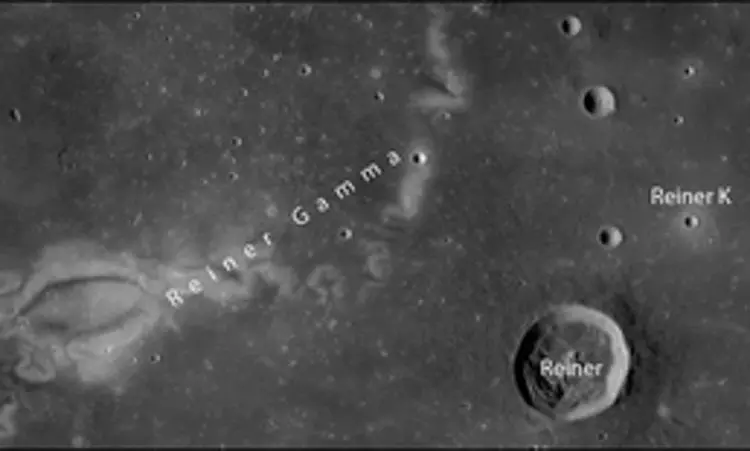AI finds lunar rocks with unique dust; may help decode Moon's magnetic past
Earth's Moon is almost completely covered in dust. Unlike on Earth, this dust is not smoothed by wind and weather, but is sharp-edged and also electrostatically charged. This dust has been studied since the Apollo era at the end of the 1960s.

Representative image (IANS)
LONDON: An international research team has for the first time discovered anomalous metre-sized rocks on the lunar surface that are covered in dust and presumably exhibit unique properties -- such as magnetic anomalies.
Earth's Moon is almost completely covered in dust. Unlike on Earth, this dust is not smoothed by wind and weather, but is sharp-edged and also electrostatically charged. This dust has been studied since the Apollo era at the end of the 1960s.
It is known that there are magnetic anomalies on the lunar surface, particularly near a region called Reiner Gamma. However, the question of whether rocks can be magnetic has never been investigated.
The scientists led by a team from the University of Munster in Germany using artificial intelligence (AI) found that only very few boulders on the Moon have a layer of dust with very special reflective properties.
For example, the dust on these newly discovered boulders reflects sunlight differently than on previously known rocks. These new findings help scientists to understand the processes that form and change the lunar crust, revealed their study, published in the Journal of Geophysical Research - Planets.
"Current knowledge of the Moon's magnetic properties is very limited, so these new rocks will shed light on the history of the Moon and its magnetic core," said Ottaviano Rusch from the 'Institut für Planetologie', categorising the discovery.
"For the first time, we have investigated the interactions of dust with rocks in the Reiner Gamma region -- more precisely, the variations in the reflective properties of these rocks. For example, we can deduce to what extent and in which direction the sunlight is reflected by these large rocks," Rusch added.
The research team was originally interested in cracked rocks. They first used AI to search through around one million images for fractured rocks from the images taken by NASA’s Lunar Reconnaissance Orbiter spacecraft, which orbits the Moon.
But the search algorithm identified around 130,000 interesting rocks, half of which were scrutinised by the scientists.
"We recognised a boulder with distinctive dark areas in just one image. This rock was very different from all the others, as it scatters less light back towards the sun than other rocks. We suspect that this is due to the particular dust structure, such as the density and grain size of the dust," Rusch explained.
"Normally, lunar dust is very porous and reflects a lot of light back in the direction of illumination. However, when the dust is compacted, the overall brightness usually increases. This is not the case with the observed dust-covered rocks," added Marcel Hess from TU Dortmund University in Germany.
The scientists next aim to investigate the processes that lead to the interactions between dust and rocks and to the formation of the special dust structure. These processes include, for example, the lifting of the dust due to electrostatic charging or the interaction of the solar wind with local magnetic fields.



